Hydrangeas, with their stunning and abundant blooms, have captivated the hearts of flower enthusiasts far and wide.
These magnificent flowering plants are known for their large, vibrant flower clusters that bring beauty to any garden. However, behind the allure of these elegant blooms lies a crucial aspect that plays a key role in their growth and splendor – properly watering hydrangeas.
If you are new to gardening, it can be hard to know how and when to water newly planted hydrangeas.
But don’t worry! This blog post is just for you.
Because today, we will explore the various aspects of watering hydrangeas.
So, without wasting any further time, let’s advance toward it.
- How to Water Hydrangeas?
- Hydrangeas' Water Needs!
- Factors Affecting Hydrangea Water Requirements!
- Watering Techniques for Hydrangeas!
- Watering Hydrangeas Indoors!
- Signs You Have Overwatered Your Hydrangea!
- Signs of Underwatered Hydrangeas!
- Helping Hydrangeas to Recover from Drought!
- What Is the Optimal Time to Water Hydrangeas?
- Best Type of Water for Hydrangeas!
- Conclusion!
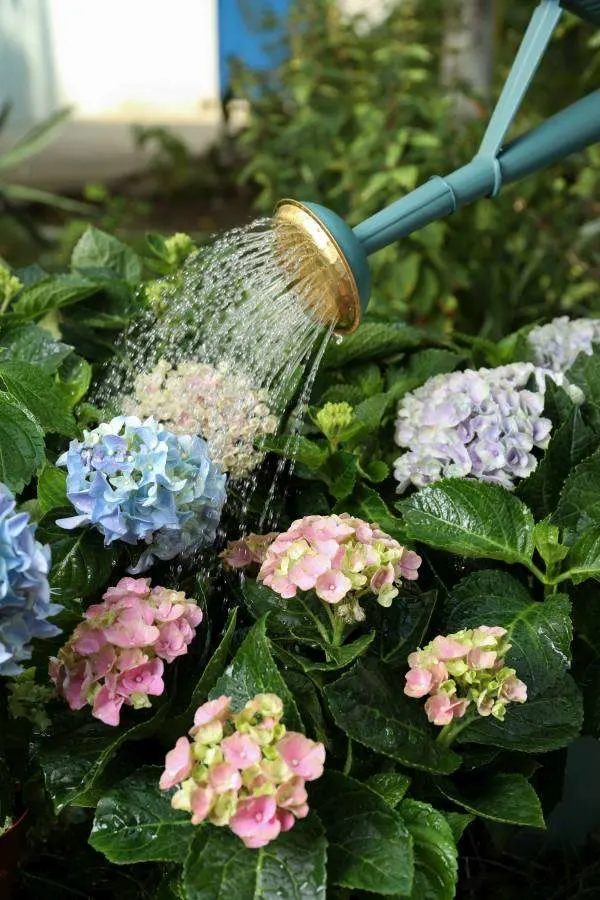
How to Water Hydrangeas?
Hydrangeas are adored blooming plants that bring charm and sophistication to gardens and landscapes, but ensuring their continued beauty necessitates deep watering.
I know watering hydrangeas seem simple. But trust me, it requires a delicate balance to provide the right amount of hydration without overwatering or underwatering.
So, it becomes crucial to understand the proper techniques for watering hydrangeas.
Let’s start with hydrangea’s water needs.
Hydrangeas’ Water Needs!
The genus Hydrangea possesses a variety of plant species, each with its own unique characteristics and needs.
Despite their shared love for water, different hydrangea varieties have varying water requirements due to their native habitats and genetic makeup.
So, let me tell you the water requirements of some common hydrangea varieties:
Mophead and Lacecap hydrangeas are native to areas with ample rainfall, indicating their preference for consistently moist soil.
They thrive when provided with deep, regular watering, especially during periods of drought or dry spells.
However, it’s important to avoid overwatering, as it can lead to rotting roots and other issues.
Maintaining well-drained soil is also essential for these hydrangea varieties.
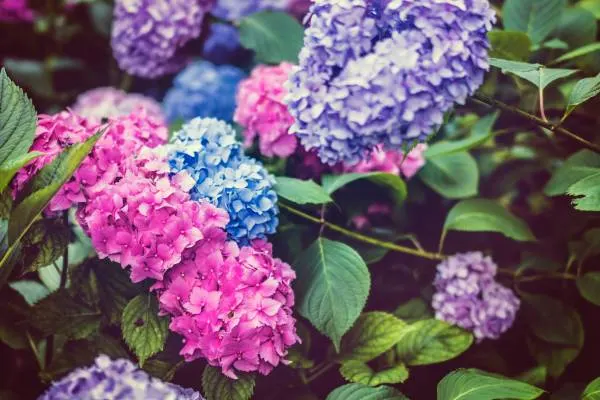
Panicle hydrangeas are generally more tolerant of drier conditions compared to Mophead and Lacecap hydrangeas.
They can handle short periods of dryness and are adaptable to various soil types.
However, it is still necessary to water these plants consistently, particularly during hot and dry periods, to ensure healthy growth and abundant flowering.
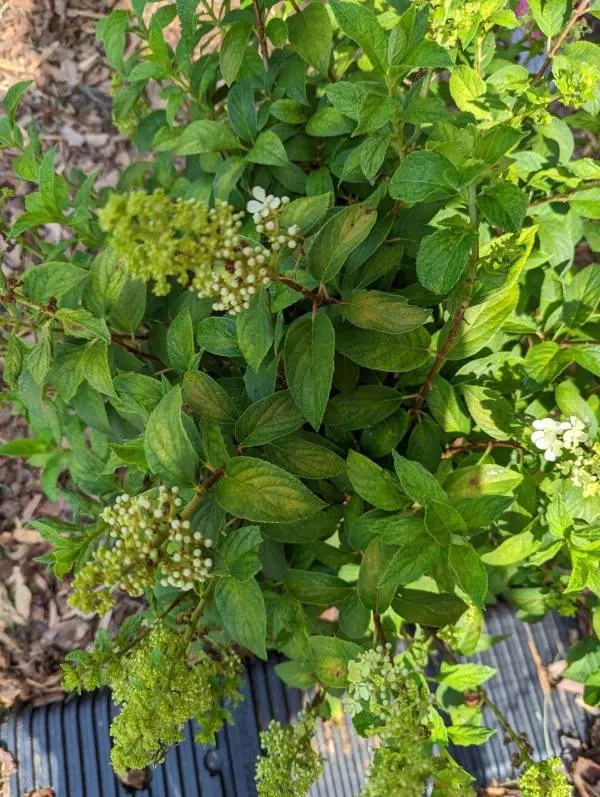
Oakleaf hydrangeas prefer moist soil conditions and benefit from watering regularly.
They are more sensitive to drought stress compared to panicle hydrangeas.
Deep watering to reach the plant’s roots is crucial for their overall health and vigor.
It’s essential to strike a balance between providing enough moisture and avoiding waterlogging.
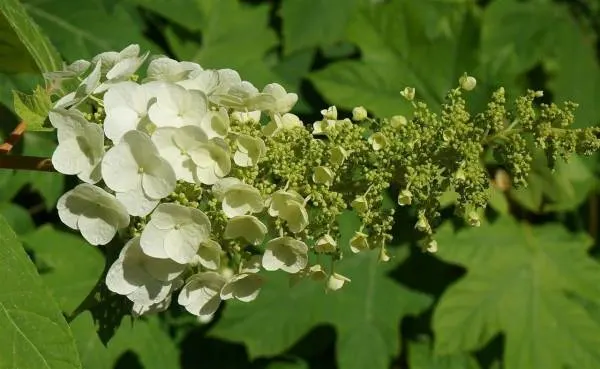
Factors Affecting Hydrangea Water Requirements!
See! The water requirements of different hydrangea varieties vary greatly.
But that’s not all!
There are certain factors that affect exactly how much water your hydrangea needs.
Let’s discuss these factors in detail.
Climate and Weather Conditions
Your region’s climate and weather conditions play a significant role in determining the watering needs of your hydrangeas.
Hot and dry climates require more watering to compensate for the increased evaporation and potential water loss.
In contrast, cooler and more humid climates may demand less watering.
NOTE: Monitoring the weather patterns and adjusting your watering schedule accordingly ensures that your hydrangeas receive the appropriate hydration to thrive.
Soil Type
The soil type in which hydrangeas are planted, drainage characteristics, and pH levels significantly impact water absorption.
Hydrangeas thrive in well-draining soil that allows excess water to escape, preventing waterlogging and other water-related issues.
Sandy soils tend to drain more quickly, requiring frequent watering, while clay soils retain moisture for more extended periods, requiring less watering.
Apart from that, the soil’s pH level affects the availability of nutrients to the plant.
Most hydrangeas prefer slightly acidic to neutral soil (pH 5.5-7) for optimal growth.
Thus, it is necessary to adjust the soil’s pH if you want to enhance water and nutrient uptake.
Newly Planted Hydrangeas
The age and size of your hydrangea plant also influence its watering requirements.
Young, newly established hydrangea plants have smaller root systems and are more susceptible to drying out. Therefore, they require more frequent watering to ensure their roots stay adequately hydrated.
As your hydrangea plant mature and develops an established root system, the watering needs may decrease. But it’s still crucial to provide consistent water to your hydrangea.
Larger hydrangea plants with more foliage and blooms have higher transpiration rates and may require more water to support their growth and flowering.
Watering Techniques for Hydrangeas!
Here comes the moment you have been waiting for.
Let’s discuss some practical methods regarding how to water your hydrangea plants.
Deep Root Watering
Deep root watering is a crucial technique for hydrangeas as it encourages the development of a strong and healthy root system.
Instead of light surface watering, deep root watering involves applying water directly to the plant’s root zone.
This method allows the water to penetrate deeper into the soil, reaching the roots where needed most.
Thus encouraging more profound root growth and more efficient water absorption.
Want to know how awesome is this?
Deep root watering,
Promotes root growth
Improves drought tolerance
Helps prevent shallow root development
Though surface watering provides immediate hydration, it can also lead to shallow root growth and increased vulnerability to drought.
So, better avoid this method, especially in the case of hydrangea plants.
Drip Irrigation Systems
Drip irrigation is a highly effective watering method for hydrangeas.
It involves using a network of tubes or hoses with emitters that deliver water slowly and directly to hydrangea root zones.
Well! You can say that it is an easy way to do deep root watering.
Right?
Drip irrigation systems provide a consistent and controlled water supply, reducing the risk of overwatering or underwatering.
They also minimize water loss through evaporation and deliver water precisely where needed.
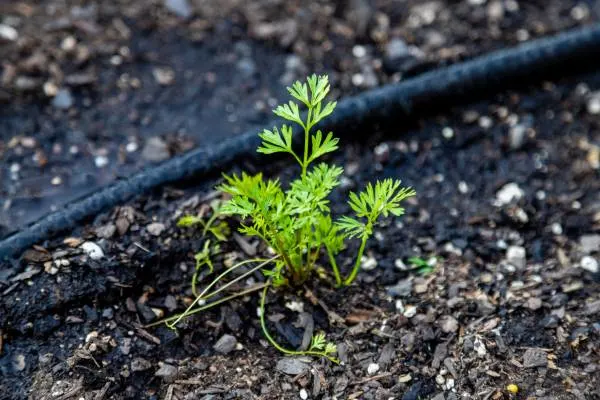
Watering Hydrangeas Indoors!
Potted hydrangeas are a popular choice for adding beauty to interior spaces.
But watering indoor hydrangeas differs from watering their outdoor counterparts.
They are typically potted in containers and are more susceptible to drying out due to the limited soil volume.
That’s why the frequency of watering indoor hydrangeas depends on various factors, including:
Pot size
Humidity levels
Temperature
Overall condition of the hydrangea
As a general guideline, check the soil moisture regularly by inserting your finger about an inch deep into the soil. Water your hydrangea when the top inch of the plant soil feels dry.
Avoid letting the soil completely dry out (it shouuld be able to retain moisture) or become waterlogged, as both conditions can harm the plant’s health.
Related: Why Is My Hydrangea Dying? How Can I Save It?
Signs You Have Overwatered Your Hydrangea!
Overwatering hydrangeas can lead to poor effects on their health and appearance.
If you suspect that you may have overwatered your hydrangea, look for the following signs:
Wilting Leaves
When hydrangeas are excessively watered, their leaves may appear wilted, even though the soil is moist.
It can be confusing because wilting is often associated with underwatering the plant.
However, an overwatered hydrangea plant experiences root damage, impairing its ability to absorb water properly.
As a result, the leaves may become limp and droopy.
Yellowing Leaves
Overwatering can cause the hydrangea leaves to turn yellow.
It is a sign of stress and indicates that your plant is not efficiently absorbing nutrients from the soil.
The excessive moisture prevents the plant roots from properly taking up essential elements, leading to yellowing leaves.
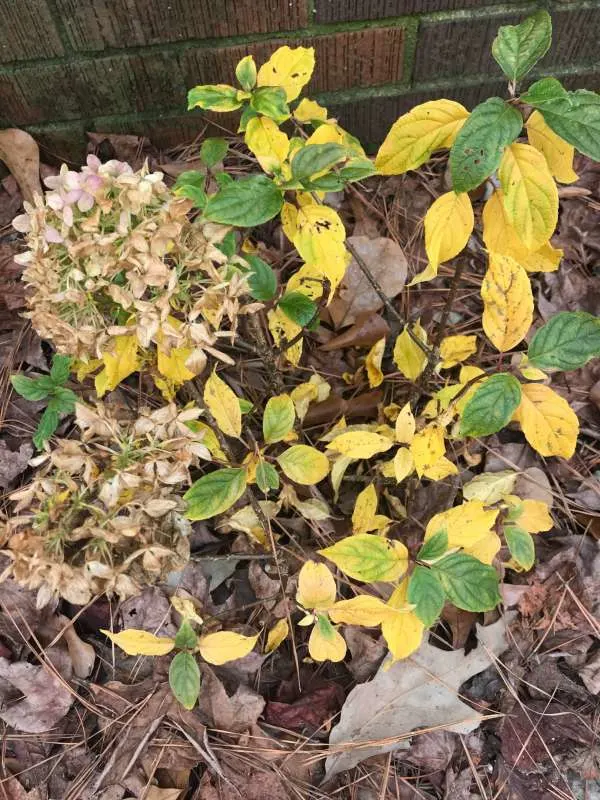
Root Rot
Overwatering creates a soggy environment around the plant roots, making them susceptible to rot.
The excessive moisture deprives the roots of oxygen, promoting the growth of harmful fungi and bacteria.
Root rot is characterized by a foul odor arising from the soil and dark, mushy roots.
It can significantly impair the health and survival of your hydrangea plant.
Rescuing Overly Watered Hydrangeas!
Overwatering cause considerable stress and damage to hydrangea plants.
Fortunately! with the right steps, you can help them recover.
Here is a detailed explanation of how to revive overwatered hydrangeas:
Assess the extent of damage: Examine the plant’s foliage and roots to determine the severity of overwatering. Look for wilting plant leaves, yellowing foliage, leaf drop, and signs such as a foul odor or mushy roots.
Trim-affected foliage: Remove wilted or yellowed leaves to redirect the plant’s energy toward new growth. If certain stems show severe decay, it’s best to remove them entirely to prevent the spread of disease to other hydrangea plant.
Adjust watering practices: Reduce the watering frequency to allow the soil to dry out between waterings. Check the moisture level by inserting your finger into the soil – if the top inch feels dry, it’s time to water.
Improve soil drainage: Overwatering often occurs due to poor soil drainage. Enhance drainage by amending the plant soil with organic matter, such as compost or peat moss, to improve its texture and allow excess water to drain.
Be patient: Reviving overwatered hydrangeas takes time. It may take several weeks or even months for the plant to bounce back. Keep a close eye on the plant’s progress, looking for signs of new growth, improved foliage color, and increased vitality.
Now, let’s see what happens when you underwater your hydrangea plants.
Signs of Underwatered Hydrangeas!
As we have discussed the signs of overwatering, it also becomes crucial to discuss the symptoms of underwatered hydrangeas so that you can quickly identify through which phase your plant is going.
Let’s discuss the signs of underwatering in hydrangea plants:
Leaf Curling
When you underwater your hydrangea, the plant leaves may exhibit curling or shrinking.
It is actually a defense mechanism employed by the plant to conserve moisture.
The curling of leaves helps to reduce the surface area exposed to the air, minimizing water loss through transpiration.
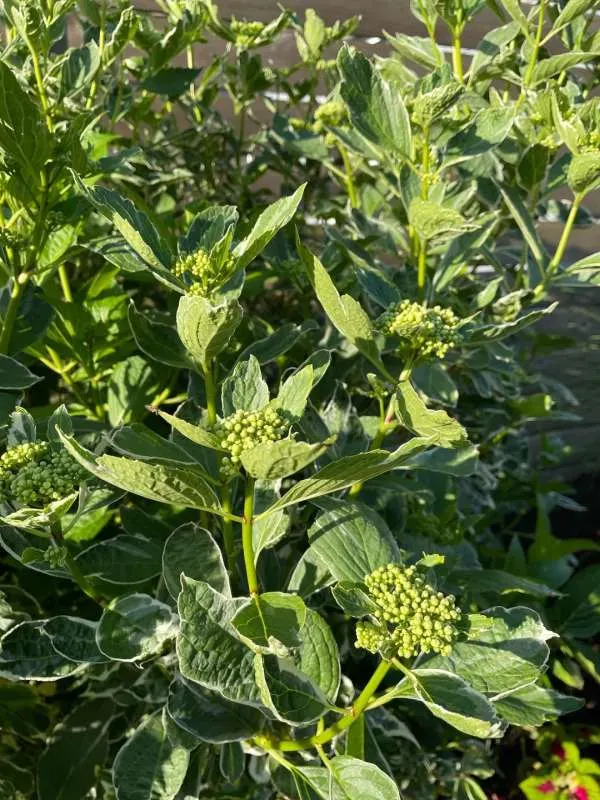
Dry and Brittle Foliage
Underwatered hydrangeas often have foliage that appears dull, lifeless, and dry.
The leaves may lose their natural luster and become brittle to the touch.
It is a visible sign of water stress and indicates that the plant is not receiving enough moisture to maintain healthy foliage.
Restricted growth
Insufficient water can severely impact the growth of hydrangeas.
Underwatered plants may exhibit restricted growth, with
Smaller leaves
Stunted stems
Lack of vigor
The limited water supply hinders the plant’s ability to carry out vital physiological processes, reducing overall growth and development.
Helping Hydrangeas to Recover from Drought!
Underwatered hydrangeas can suffer from dehydration and nutrient deficiency.
But, like overwatering, you can help your plant recover with the right approach.
Here is a detailed explanation of how to revive an underwatered hydrangea:
Identify signs of underwatering: Look for wilting leaves, leaf curling, dry and brittle foliage, and restricted growth. These symptoms indicate that your hydrangea is not receiving sufficient water.
Increase watering frequency: Adjust your watering routine to ensure the soil remains evenly moist. Water deeply, allowing the water to penetrate the root zone of your plant. Avoid shallow surface watering, as it may encourage shallow root development.
Mulching: Apply a layer of organic mulch, such as wood chips or compost, around the base of the plant. Mulching helps retain soil moisture, reduces evaporation, and keeps the root zone cooler.
Along with proper watering, ensure your hydrangeas receive optimal care.
What Is the Optimal Time to Water Hydrangeas?
The optimal time of day to water your hydrangeas depends on various factors, including:
Climate
Weather conditions
Specific needs of your plants
While there isn’t a definitive answer that applies universally, there are some general considerations to keep in mind when deciding when to water your hydrangeas.
Morning
Water your hydrangeas in the morning as it is often considered beneficial.
During the early hours, temperatures are typically cooler, and the morning sun is not as intense.
Watering your hydrangea in the morning allows the foliage to dry off gradually throughout the day, reducing the risk of fungal diseases, such as powdery mildew.
Evening
You should water your hydrangeas in the evening, particularly in hot climates.
By watering in the evening, you can help hydrangeas recover from the heat stress of the day and provide them with hydration for the night.
The soil has the opportunity to retain moisture for a longer period, benefiting the plants during the overnight hours.
However, it’s essential to avoid watering too late in the evening to allow enough time for the foliage to dry before night.
It will reduce the risk of diseases.
Considerations for Specific Climates
In regions with high humidity or frequent rainfall, you should water hydrangeas earlier under the morning sun. It allows the foliage to dry off before the evening. Thus, minimizing the risk of prolonged moisture that can contribute to disease development.
On the other hand, in arid climates, you should water in the evening as it is more beneficial and provides plants the moisture they need during the night when temperatures drop.
Best Type of Water for Hydrangeas!
The type of water you use for hydrangeas can influence their growth and overall health.
While hydrangeas are relatively adaptable and can tolerate a range of water sources, there are different types you must consider before giving them to your plants.
Tap Water
In most cases, normal water from your tap is safe to use for hydrangeas.
However, the water quality can vary depending on your location.
Municipal water supplies often contain additives to disinfect the water, such as:
Chlorine
Chloramine
Which can potentially affect the soil’s pH level over time.
So, it is recommended to let the tap water sit uncovered for a day before using it.
Alternatively, you can use a water conditioner to remove additives.
Rainwater
Rainwater is generally considered the ideal water source for hydrangeas.
It is naturally soft, free of additives, and has a slightly acidic pH, which hydrangeas typically love.
Collecting rainwater in a rain barrel or bucket provides a sustainable and cost-effective solution.
Note: If you live in an area with high levels of air pollution or other contaminants, it may be advisable not to use rainwater and rely on alternative water sources.
Filtered or Distilled Water
Filtered or distilled water can be used for hydrangeas, especially if you have concerns about unfiltered water.
Filtered water helps remove impurities, including chlorine or heavy metals, that might be present in unfiltered water.
It’s also vital to note that filtered or distilled water may lack essential minerals that can contribute to the overall nutrition of the plants.
Therefore, supplementing with appropriate fertilizers ensures your hydrangeas receive the necessary nutrients.
That’s all for today!
Now it’s time to move toward the conclusion and summarize the talk here.
Conclusion!
The water needs of hydrangeas vary with the different species.
Apart from the diverse range of varieties, there are different factors that can alter the watering needs of hydrangeas.
If we talk about the best techniques, remember to avoid overhead watering and prefer deep root watering.
You can also use a drip irrigation system in this regard.
Beyond all that, if you feel your plant is dry or has wilting leaves, instantly look for the signs of over and underwatering, and take suitable measures according to the plant’s condition.
So, get started now and enjoy the beauty of well-watered hydrangeas!
Regards,
Moiz Atiq.
